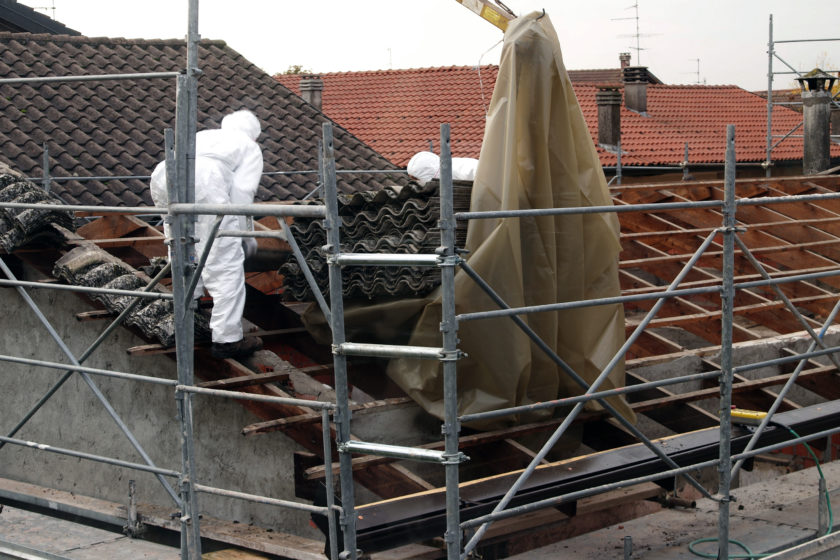Introduction
Asbestos is everywhere. It has been used for thousands of years, and it’s still a problem today. Asbestos was used in construction because it is strong and cheap to produce. Unfortunately, asbestos can also cause lung cancer if inhaled by humans. In Australia, we have a very strict ban on the use of asbestos in nearly all products—but what about construction? Are there still buildings being built using this toxic material?
The Dark Stuff
Asbestos is a naturally occurring mineral. It is made up of thin, flexible fibers that are resistant to fire and heat. The fibrous material was used in the construction industry for insulation and fireproofing. Asbestos was often found in building materials such as ceiling tiles, wall panels and pipes.
The use of asbestos declined after 1980 because it was found to be a health hazard; breathing in even small amounts can cause serious lung diseases like asbestosis or mesothelioma later on in life. Today’s buildings don’t contain any asbestos unless they were built before 1980 or renovated since then with older materials containing asbestos.
Where Did Asbestos Come From?
Asbestos is a naturally occurring mineral that has been mined in Australia since the 1880s. It was used extensively in construction and building materials, as it is fireproof and resistant to heat. Asbestos was found in insulation, fireproofing, adhesives, roofing materials and cement pipes.
Asbestos was also used in brake linings and clutches, as well as other industrial applications such as gaskets and clutch discs for manual transmissions on cars manufactured before 1980.
When Did Asbestos Get Banned?
There are countries that have banned the use of asbestos. In Australia, it was banned in 2003. The United States had previously banned it in 1973, and Europe followed suit by banning its use in 1999. It’s still being used for some things, though—like brake pads on cars and trucks.
Asbestos in Australia
Unfortunately, it is not just Australia that has to deal with asbestos. Asbestos is everywhere in the world and across all industries. Most people have heard of its dangers, but many are still unaware of how widespread it is or how difficult it can be to remove.
Asbestos was hugely popular before its health risks were fully understood. It was used in building materials like roofing shingles, floor tiles and wallboard because of its strength and resistance to fire damage. People who worked with asbestos took precautions like wearing masks when cutting down asbestos-containing materials and handling them carefully so as not to release fibers into the air around them; however these precautions were insufficient given that even low levels of exposure can cause mesothelioma or other cancers later on in life—and there’s no way of knowing which people will develop cancer from exposure unless they undergo testing after their death (which isn’t always possible).
Because there are so many types of asbestos containing products out there today – both old ones still lying around somewhere waiting for someone else’s home improvement project someday soon as well as new ones being installed every day with no intention whatsoever on keeping them safe until they’re disposed – everyone should assume that at some point during their lives they’ll come into contact with an unsafe substance containing this mineraloid compound whether by accident or intentionally trying something different.”
Asbestos in Melbourne
Asbestos was used in construction in Australia, and this is a problem. The asbestos problem is becoming more well known in Melbourne, but it’s not getting any better yet. Asbestos needs to be solved quickly because it causes lung cancer and other deadly diseases that are hard to treat if you get them at a young age. Even if you use protective gear when working around asbestos, there’s still a chance you could develop these fatal diseases later on in life.
The Future of Asbestos in Construction in Melbourne, Australia
There has been a lot of debate about whether asbestos should be banned or not. If you are wondering what the future holds for asbestos in construction, look no further than the discussion below.
We have always been told that asbestos is dangerous and should be removed from our homes and workplaces as soon as possible. However, some companies say it’s not so bad and they still use it today because they believe that there is no other way to build their structures properly. What we know for sure is that this issue will continue to create controversy until there is definitive evidence either way about how harmful it really is to humans (and animals).
Asbestos has been used since ancient times but wasn’t known how dangerous it was until recently when we realized just how toxic this material actually was; now all countries around the world have strict policies against manufacturing products containing asbestos fibers because these fibers can cause serious health problems such as lung cancer if inhaled over long periods of time (especially by children).
Asbestos is still a problem, but it is becoming more and more well known.
Asbestos is still a problem, but it is becoming more and more well known. Asbestos is not banned in Australia, though some products do indeed contain asbestos. It was commonly used in construction and manufacturing and also in mining. The military uses it as well for its strength and durability properties, however this usage has been heavily limited due to health concerns about working with the material at high temperatures for long periods of time.
Conclusion
We hope that this post has given you a better understanding of the dangers of asbestos and how it can affect your health. Asbestos use has been banned in Australia since 2003, but it is still a problem today due to its long half-life. If you are concerned about a building or structure containing asbestos, then please contact us for more information on how we can help remove these dangerous materials from your property!
You can contact us on 0475 143 106 or email us on: asbestosgoneandclean@gmail.com!


